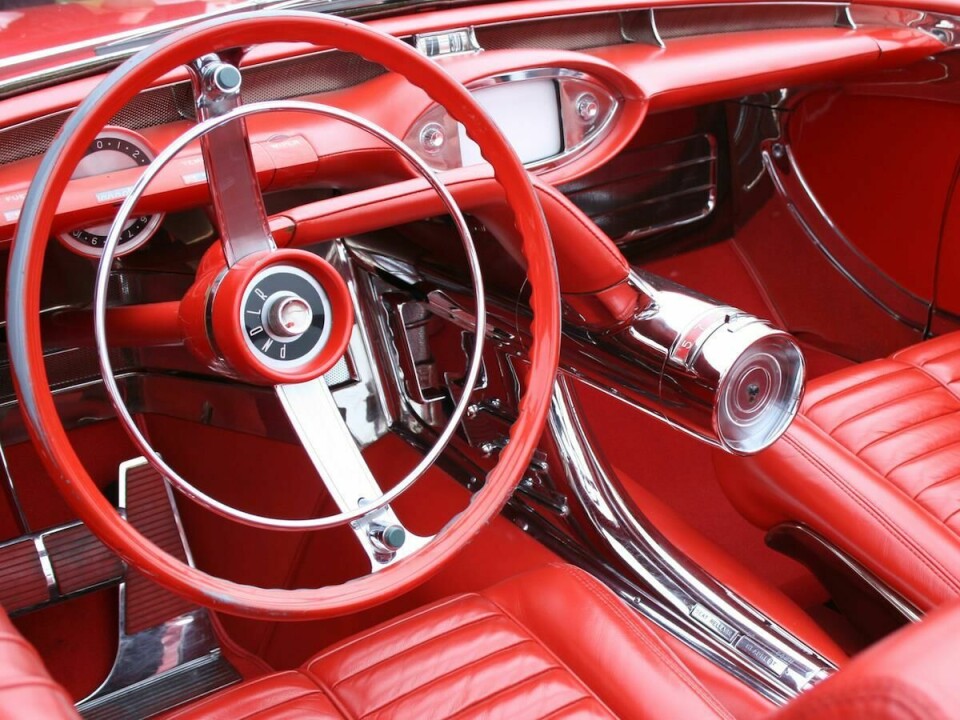
Concept Car of the Week: Buick Centurion (1956)
The centrepiece of General Motors legendary Motorama shows, the Buick Centurion was the combined talent of Harley Earl and Charles ‘Chuck’ Jordan
The General Motors Motorama shows of the 1950s were an extravaganza of design and spectacle, showcasing General Motors’ latest production cars plus dramatic concept cars that predicted the future of the automobile. All of these were displayed on elaborate moving sets with performers and bands that made the old-fashioned motor show seem Victorian by comparison.
At the 1956 Motorama GM introduced a host of new concepts, some of which became classics. Perhaps the best known of these is the Buick Centurion, a radical four-seat sports sedan intended to preview a near-future Buick. The car was the dream child of Harley Earl, the legendary Vice President of Design. To assist him he brought in a young designer whose work had caught his eye over at the truck division, Charles ‘Chuck’ Jordan.

The Centurion featured a fibreglass body, sculpted to seem part rocket, part jet fighter. The sweeping side treatment of the two-tone paint made helped define the car as a Buick, but everything else was new. The front end sloped dramatically downward in contrast to the more upright GM products of the day, and joined the bumper in an integrated composition, foreshadowing front end treatments of a generation later. The grille was a relatively simple affair, shaped somewhat like the then-current Corvette’s, with a simple horizontal chrome bar for ornamentation. Flanking the grille were the headlights, set deeply in nacelles that were an extension of the body. The whole composition formed a scowling shark-like face that would preview the aggressive look of the Buicks at the end of the 1950s.
From the side, the familiar Buick ‘sweepspear’ united the front headlights and the body then swept under the passenger compartment, over the rear wheels and terminated in the dramatic flowing tailfins. The two-tone paint with its brilliant red-over-white treatment, made the car appear lighter, especially with the whitewall tires. The glasshouse was just that – a glass canopy roof, the fantasy cockpit that was the dream of every jet fighter-inspired designer of the 1950s.

At the rear of the Centurion were the dramatic tailfins, curving horizontal wings that dipped down to meet a single conical ‘Dagmar’ that contained brake and back-up lights. Above this, integrated into the body, was a back-up camera which replaced all the mirrors in the car. This horizontal treatment of the tailfins was unique for the time and in a sense were not fins but wings, reinforcing the aircraft imagery of the car. Whatever you want to call them, they were among the most elegant and refined version of this design trend ever created, and previewed the forthcoming 1959 Chevrolets and Buicks.

The interior was accessed through traditional doors with glazing integrated into the glass canopy. The front seats would automatically retract to allow for ease of entry. Once seated, passengers and driver could both marvel at the minimal composition of the instrument panel. The mirror screen was located in the center of the IP, while an enormous chrome nacelle projected outward, containing transmission and environmental controls. The steering column originally cantilevered off of this nacelle, although that was later altered. Chrome trim pieces descended from the nacelle under the IP and framed the top of the passenger floorboard area. The whole assembly was a glamourised version of the fighter jet cockpit – more Palm Springs than Edwards Lake in character.
The Centurion would become a Motorama favorite, both with the public and inside General Motors. The car completed its tour with the Motorama, receiving massive publicity, and was retired to General Motors’ private collection at the Sloan Museum, having been spared the trip to the crusher which was the fate of many a GM concept car. It remains there today, although it frequently tours to the delight of new generations of fans.

The Motorama show probably hit its high point in 1956 with 2.2 million visitors in several cities. There were no shows for the next two years, and then they started again. They were still popular when discontinued in 1961 – over a million visitors came to limited venues that year. However, the shows were incredibly expensive to produce, build and move – over 100 trucks were involved in the operation, and each had to arrive at a certain time and in a certain order, which was quite a feat of logistics in a time before computers and GPS. Also, television would begin to be the dominant, and preferred, medium to convey the Motorama message.
The principals involved would move on too. Harley Earl would wind up his glorious, flamboyant career in 1958, a victim of failing health and changing times at GM. The young Chuck Jordan was soon be placed in charge of Cadillac design and would go on to have his own very successful career at GM, eventually becoming Vice President of Design.
The Centurion remains one of the classics of the 1950s. It was a car that both summed up the spirit of the era, and in some ways defined it too. Now in its 60th anniversary year, it can still inspire us today with its expressive character and elegant execution.
Want more? Watch a video on it here



